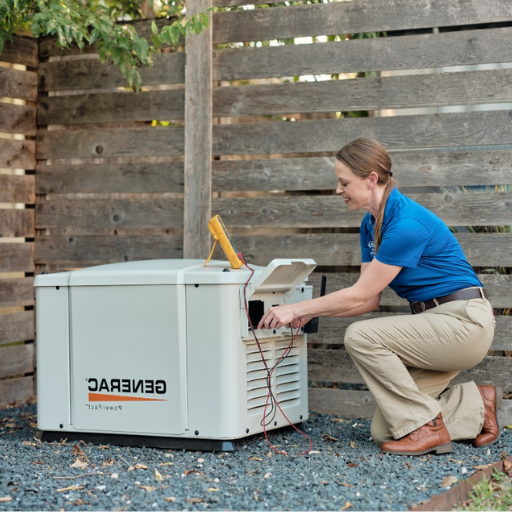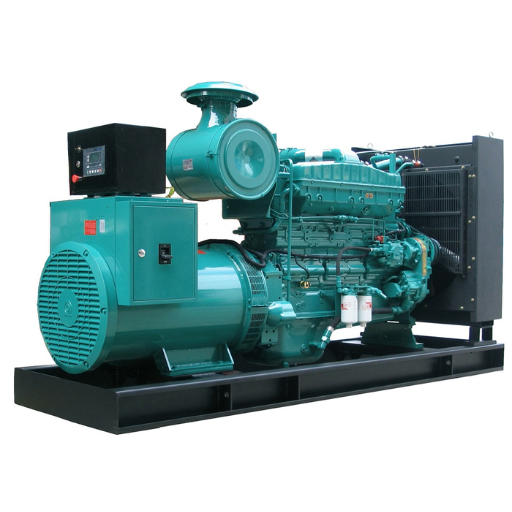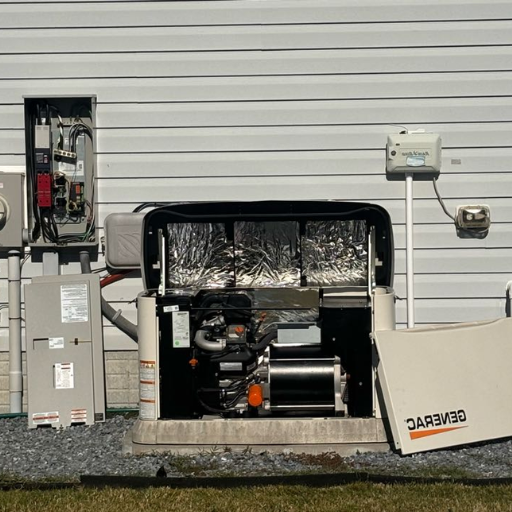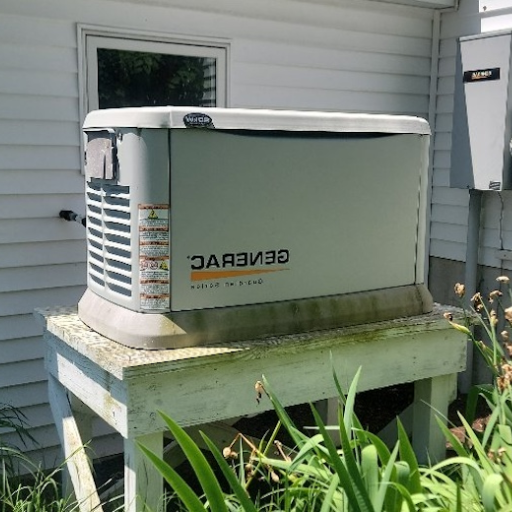Power delivery is only one part of caring for your generator. Ensuring your peace of mind, business, and home safety are all essential pillars. Whether you focus on planning for sudden outages or ensuring long-term performance, preventative maintenance guarantees power systems work optimally when needed. This guide will provide practical advice on the most vital strategies and steps necessary for effective generator care, helping improve efficiency, prolong lifespan, and reduce costly repairs. Understanding basic tasks associated with the maintenance, this article will equip you with helpful knowledge for maintaining consistent and reliable power, irrespective of surrounding conditions.
How Often Should You Perform Generator Maintenance?

Trusting a generator will only be possible through regular maintenance. This is the most crucial step, and the most often neglected one. According to most manufacturers, maintenance should be performed every six months, or after 100-200 hours of usage, whichever comes first. An annual inspection and servicing is generally acceptable for standby generators that are not regularly used. As with any other device, ensuring your generator’s maintenance schedule is followed alongside the user manual will get the best results.
What is the Ideal Maintenance Schedule for Different Types of Generators?
| Generator Type | Maintenance Frequency | Key Tasks | Notes |
|---|---|---|---|
|
Every 40-50 hours or monthly |
Change oil, air filter, and spark plug, and run tests |
Store in a cool, dry place |
|
|
Standby Generator |
Weekly, monthly, annually |
Test functions, inspect fluids, change oil, and full tests |
Inspect during storm-prone seasons |
|
Industrial Generator |
Weekly, monthly, annually |
Visual inspections, lubrication, and run load tests |
Adjust the schedule for the environment |
|
Diesel Generator |
6 months or 400 hours |
Check the coolant, fuel system, belts, and change the oil |
Prevent corrosion with regular use |
|
Gas Generator |
Monthly, annually |
Inspect fuel lines, battery, dust, and spark plug |
Use manufacturer-specific maintenance guidance |
|
Inverter Generator |
Monthly, usage-based |
Adjust speed, inspect the alternator, and clean fluids |
Less noise, optimized consumption during operation |
How Does Regular Maintenance Prevent Generator Failure?
It is crucial to conduct regular generator maintenance to guarantee that its components work seamlessly and effectively. Regular generator maintenance improves its operational ability while also protecting it from unforeseen breakdowns that can result in expensive repairs and downtime. Addressing potential issues through generator maintenance involves some of the following:
- Identifying Signs of Wear and Tear
Regular inspections automatically eliminate the ability for generators to lose performance due to high-level maintenance. Additionally, you can spot loss-seeking signs like corrosion on various generator portions. The U.S. Department of Energy estimates that unattended generators lose roughly 15 percent of their total efficiency yearly.
- Taking Preventive Action Against Fuel Contamination
Generators that are not regularly monitored are highly likely to become severely contaminated with sediment, water, or even microbes. A recent study states that fuel contamination is one of the major drivers of generator failure, especially in the standby form. Constantly cleaning and filtering fuel greatly lowers the chance of injector and clog damage.
- Guaranteeing Maximum Lubrication
Moving components within your generator can experience high friction due to oil breakdown over time. Regularly changing oil and keeping up fuel levels enable minimum internal part wear and oil overheating.
- Battery and Electrical System Checks
The generator’s batteries play a crucial role at startup and during operation. Maintenance ensures that the batteries’ connections are clean and tight, fluid levels are reasonable, and voltages are adequate to avert electrical breakdowns.
- Extending Lifespan
Routine maintenance greatly increases a generator’s lifespan. Studies indicate that generators that are maintained steadily can last as little as 20-30 years, while neglected generators break down far sooner.
- Compliance with Safety Standards
Maintenance ensures that generators function correctly without the risk of overheating, fire, or carbon monoxide emissions. In industrial use, maintenance is often required due to Occupational Safety and Health Administration (OSHA) standards.
Proper generator maintenance avoids risks and enhances dependability, ensuring optimal power availability during vital periods.
What Are the Key Components of a Generator Maintenance Plan?
Each generator needs some form of maintenance, and to build a generator maintenance strategy, one has to pay particular attention to fulfill each relevant requirement. The first step I do is to plan control meetings for inspection and mark checks for signs of wear or damage. There are also regular intervals for changing the oil and filter, which helps maintain the engine’s smooth operation. Battery cleaning and testing help in avoiding power problems. The fuel system needs active maintenance so it is clean and in order; this also involves removing any sediment trapped in the fuel tank. Finally, I periodically conduct load testing to ensure the generator can handle its intended workload in a practical setting.
What Does a Comprehensive Generator Service Include?

Having a complete generator service done means undertaking all the following steps to maintain its reliable performance:
- Inspection and cleaning of the unit, looking out for debris and checking for wear along with cleaning important areas, -taking care of filter and oil changes and replacing the oil to make sure the engine works at its peak.
- Battery care entails testing the battery, cleaning its terminals, and ensuring that it is fully charged.
- Examining and cleaning the fuel system to maintain its reliability means removing sediment, inspecting, and cleansing the entire fuel system, making sure fuel flows properly.
- Measuring performance involves putting the generator under a set load, which helps test whether it can perform the expected tasks.
Working on these tasks frequently will help keep the generator working smoothly while slowing down wear and tear.
Why is Load Bank Testing Essential?
Load bank testing is required to check a generator’s readiness for a realistic scenario. It simulates real-world electrical load and enables a generator to perform optimally at its full functional potential to avoid failures during actual work.
How Do You Conduct a Thorough Visual Inspection?
A complete visual check of a generator entails inspecting all its parts for indications of damage, wear and tear, or likely failure. To achieve this, follow the steps outlined:
- Outer Inspection
Check for scratches, dents, marks, or other visible damage on the generator’s body. According to estimates, as much as 40- 50% of equipment maintenance costs are due to corrosion. Also, remember that exposed weather and moisture areas are most vulnerable.
- Check Electrical Connections
Look for exposed wires on all the cables and check all connections for overheating indicators such as burns or discoloration. According to a study performed in 2023, improper electrical connections account for 30% of generator malfunctioning. Hence, this step is of the utmost importance.
- Evaluate the Fuel System
Examine the fuel lines, tank, and connections for possible blockages or leaks. Evidence indicates that generator breakdowns are most frequently caused by a leaky or cracked fuel system, second only to fuel system problems.
- Look at the Filters and Check the Fluid Coolant Levels
Make sure the air filters do not have dirt or material that may block them to an extreme degree. If not, overheating is bound to occur. Check if the cooling system’s coolant levels are sufficient as well. Generators that are poorly cooled have a tendency to fail mechanically because they have a 60% higher chance of breaking down.
- Keep an Eye on Lubrication, Oil Levels, and Additions
Perform regular checks to ensure proper oil levels and the required medicated lubricants are maintained. Additionally, all moving components must receive proper lubrication to prevent excessive destruction of parts. Do regular checkups for oil-related tasks frequently. Oil maintenance is said to conserve up to 40% of the generator’s lifetime.
- Assess Every Component of the Battery System
Check your generator’s battery to see if there is corrosion on the terminals. Moreover, look at how much power the battery holds charge-wise and if it has any unusual swelling. Alternatively, a properly maintained battery will last between three and five years for everyday use, but monitoring these signs can alter how early or late it fails.
- Check Components of the Exhaust System
Lack of attention to testing the exhaust system for breaks, leakage, wastage in critical areas, such as the emissions void system, and checking if it interrupts efficiency. It ensures the exhaust outlet isn’t hindered; if it receives restrictions, it reverses the pressure choke engine. The generator must open the entry to these critical components so that the reverse doesn’t cause chokes, engine, or backfires.
Once you have noticed everything and that every generator has the manufacturer’s recommended maintenance, it won’t fail unexpectedly, improve reliability, and add years to its lifespan.
What Role Does a Transfer Switch Play in Service?
The function of a generator cannot be realized adequately without a transfer switch, as it manages the power supply to the generator. It automatically switches power from the utility to the generator system when an outage occurs. From my vantage, the transfer switch is paramount from a safety and efficiency perspective, as it also mitigates backfeeding, which is hazardous for utility workers and damages equipment. Moreover, it automates the entire process, which minimizes human intervention while guaranteeing the reliability of the power supply during critical situations.
How to Implement a Preventive Maintenance Plan?

Here are some steps that can help implement preventative maintenance plans successfully:
- Evaluate Equipment and Requirements
Determine what maintenance needs to be done and list equipment in order of importance and usage. Learn the manufacturers’ recommendations and operational requirements.
- Schedule Maintenance:
Every maintenance plan should include a calendar specifying what tasks need to be done, how frequently they are done, and the deadline set. The plan must also comply with the equipment’s specifications and operational objectives.
- Train the Relevant Staff:
Ensure that staff is trained to perform maintenance or supervise the maintenance works. This aids in consistency and reduces risks.
- Procedures to follow:
Set up a document that includes comprehensive checklists for every maintenance task. Red flag safety protocols and offer troubleshooting advice.
- Consistently Monitor And Review:
Routinely assess the set maintenance activities to determine plan success. Be open to further tasks or new feedback-based adjustments.
Your equipment will run efficiently, ultimately extending its lifespan if all the steps above are followed.
What is the Importance of a Maintenance Checklist?
A maintenance checklist is a fundamental feature for guaranteeing proper maintenance of tools, systems, and processes and streamlining tasks. It also improves safety and prevents troubleshooting downtimes that can be avoided. Checklists offer uniformity so that all team members approach maintenance work in the same way, and there is reliability in the way these activities are performed. A checklist is fundamental for maintenance for the five reasons mentioned below.
- Increase the Reliability of Equipment
A maintenance plan drastically lowers the frequency of unplanned repair services. Committed and consistent maintenance can increase equipment uptime by 30%.
- Enhanced Safety
Checklists provide consistency and safety inspections, reducing the number of accidents caused by equipment failure.
- Saves Costs
Checklists will minimize repair costs in the long term since these issues are less complex. Studies show that reactive approaches tend to cost upwards of 12% —18% more than prevention-focused approaches.
- Meets Legislative Guidelines
Having a checklist that covers all the aspects required aids in meeting these guidelines, thus avoiding being charged penalties as well as the legal issues caused by noncompliance.
- Effective Resource Management
Maintenance checklists help schedule specific tasks, allocate resources, and coordinate team interactions to ensure optimal efficiency and minimal time wastage. This minimizes downtime and increases productivity further.
A maintenance checklist is required for the system’s effective, safe, economical, and uninterrupted functioning without adversely impacting the workflow.
How Can Preventive Generator Maintenance Extend Equipment Life?
| Key Benefit | Maintenance Action | Impact on Equipment Life |
|---|---|---|
|
Extended Lifespan |
Regular oil and filter changes |
Reduces wear and tear on engine parts |
|
Minimized Downtime |
Routine system inspections |
Prevents unexpected failures |
|
Improved Efficiency |
Clean air filters |
Optimizes fuel use and performance |
|
Reduced Emergency Repairs |
Early fault detection |
Avoids costly breakdowns |
|
Enhanced Reliability |
Battery and fuel system checks |
Ensures startup during critical needs |
|
Optimized Operation |
Load bank testing |
Validates generator under full capacity |
|
Corrosion Prevention |
Coolant and fuel sampling |
Protects critical systems |
|
Lower Long-Term Costs |
Proactive maintenance scheduling |
Avoids expensive replacements |
|
Increased Safety |
Inspect belts, hoses, and exhaust |
Reduces chances of hazardous malfunctions |
|
Consistent Performance |
Engine tuning and diagnostics |
Maintains reliable power generation |
What Steps are Involved in Creating a Maintenance Plan?
A maintenance plan can be created by first identifying equipment requiring maintenance and consulting the manufacturer’s maintenance timetable. Thereafter, the current state of the equipment is evaluated, and planning is done on what tasks should be prioritized from an urgency and importance perspective. Inspections and servicing are scheduled and are balanced with operations for maximum efficiency. Alongside this, tools and personnel and maintenance activity outcome monitoring systems are assigned. A review of the plan needs to be continually to ensure its effectiveness.
Why is Load Testing Crucial for Generators?

| Key Reason | Testing Action | Benefit |
|---|---|---|
|
Prevents unexpected failures |
Simulates real load conditions |
Avoids power interruptions |
|
Removes wet stacking |
Burns off unburnt fuel |
Improves generator efficiency |
|
Ensures NFPA compliance |
Conducts annual load tests |
Meets safety standards |
|
Validates rated capacity |
Applies incremental loads |
Confirms readiness for full demand |
|
Extends equipment lifespan |
Identifies early wear signs |
Reduces long-term repair costs |
|
Optimizes performance |
Checks voltage and frequency |
Ensures stable power output |
|
Enhances reliability |
Evaluates component health |
Builds operational trust |
What is a Load Test and How is it Conducted?
An operational test assesses a generator’s workload capability by attempting to emulate maximum output productivity. This is done routinely for maintenance to check if the generator can sustain operational strains, like during a system failure. The important aspects and components of a load test are enumerated below:
- Maintaining Safety Standards and Preparation
Before commencing the test, conduct a functional check of the generator and undertake a safety check, including but not limited to fuel quantity assessment and verifying the control system’s status.
- Connecting the Load Bank
A load bank is employed to impose constraints on the generator. The bank is connected to the generator’s terminals, enabling the operators to manipulate and change the load increments.
- Gradual Load Increase Procedures
Most of the parameters will be set and monitored, such as voltage, frequency, temperature, pressure, etc. The actual test ranges from 25% to 100%, with multiple checkpoints like 50% and 75%.
- Monitoring and Recording Data
Important factual information, such as fuel consumption rate, emissions, and the general state of the engine, is tracked, and any anomalies perceived during this phase of the generator are noted.
- Post-Test Inspection
After the tests are completed, the generator’s condition will be assessed for any tears or issues incurred during functioning. All possible changes or repairs will be made to ensure maximum preparedness.
The described practices not only guarantee a generator’s efficiency but also aid in uncovering preemptive solutions regarding malfunctions, subsequently preventing inadvertent failures.
How Does Load Bank Testing Ensure Reliability?
A very relevant aspect of proactive generator maintenance is performing load bank tests. This ensures the generator power supply systems can fully support real-life emergencies as would be expected. The idea is to simulate electrical loads for a given duration and determine if the generator can handle its rated/full load without exceeding or failing critical limits/failure thresholds.
For example, one key concern of load bank testing is preventing wet stacking, which occurs when diesel engines run below optimal output for long periods. This leads to waste fuel building up in the exhaust system, which can reduce overall performance or cause damage over time. Research indicates that periodic load bank testing reduces these risks and overall generator efficiency by up to 20 percent.
Moreover, load bank testing can provide real-time tracking for essential system components. The process evaluates voltage, current, frequency, oil pressure, and coolant temperature. Assessing data obtained from these tests is predictive enough to reduce system malfunctioning downtime by up to 30 percent for industrial systems.
Moreover, load bank testing helps meet specific legal and organizational requirements. For instance, standards set by NFPA 110 call for performance evaluation of emergency generators, particularly in key infrastructure such as hospitals or data centers. Proper documentation of test results of load testing not only demonstrates compliance but also compliance with reliability standards, which denotes dependability.
Integrating cutting-edge testing techniques with simulated controlled environments strengthens precision control of operational regions, ensuring that generators are dependable, effective, and primed for instantaneous power supply requisites, while protecting vital functions.
What are the Common Generator Repair Services Required?

| Issue | Repair Service | Benefit |
|---|---|---|
|
Dry or cracked belts |
Belt replacement |
Ensures smooth generator operation |
|
Dead battery |
Battery replacement |
Restores reliable generator startup |
|
Burnt coils or motor |
Coil/motor rewinding |
Regains efficient power generation |
|
Weather damage |
Component replacement |
Protects against environmental wear |
|
Overheating |
Cooling system repair |
Prevents heat-related system failures |
|
Cracked engine head |
Cylinder head repair |
Restores engine function |
|
Fuel system blockage |
Line cleaning or replacement |
Ensures consistent fuel flow |
|
Faulty alternator |
Alternator repair or replacement |
Restores stable voltage output |
|
Malfunctioning control panel |
Control panel diagnostics |
Improves operational management |
|
Exhaust system issues |
Repair or unclogging |
Enhances system efficiency |
How to Identify and Fix a Diesel Generator Leak?
Diesel generator leaks can decrease productivity, negatively impact the environment, and even create safety concerns. Correct maintenance is crucial to avoid expensive repairs and ensure safety. Use the steps below to detect problems with diesel generator leaks and provide solutions.
1. Identifying A Diesel Generator Leak
Inspection of Fuel and Oil Seals
Employ the most basic technique, visual inspection, and start from the top of the generator. No fuel, oil, or coolant spills should be seen anywhere; otherwise, action must be taken. Pay close attention to pipes, seals, and gaskets, as these are a common source of leaks.
Detection by Smell
Having a powerful sense of smell could benefit you here. If you catch a whiff of oil or fuel, you could save a lot of money by identifying the leak.
Fluid Levelling Check
Even if some parts of the generator are not functioning fully due to the generator not being switched on, keep a close check on the oil, coolant, and fuel levels, as any drop can cause problems.
Electronics Detection
Make use of modern technology by using a UV light to spot potential holes.
2. Main Areas of Leaks
Fuel Lines and Joins
Leaky hoses alongside screws or interlaced holes are usually the reason behind the leaks.
Seals and Gasket Ports
Due to worn-out seals or gaskets, the age-old reason can cause oil to leak, too.
Coolant System
Coolant leaks can occur in the radiators, water pumps, or coolant hoses due to thermal stresses that cause cracks.
- Repairing a Diesel Generator Leak
Verify that connections are not too loose.
Ensure all screws, hose clamps, and connections that can be fitted are secured tightly. Do not make them too tight since this can strip threads or damage the fittings.
Remove the defective parts that need changing.
Make sure that all damaged or old hoses, seals, gaskets, or filters are replaced. If these minor adjustments are not made, larger problems may arise in the long run.
Application of sealants.
Sealants can be applied to gaskets or joints that suffer minor leaks. Before applying the sealant, make certain that the generator is switched off and cooled down.
Professional Repairs
Certified technicians should be called in to diagnose and fix the leaks for the first time to ensure that additional risks are not taken without precautions.
- Preventive Measures
Do regular maintenance.
Create a checklist that includes inspecting and performing routine maintenance on the generator. Old parts and components also need to be maintained.
Ensure any fluids used are of high quality.
Low-quality fuel, oil, or coolant will only add wear to the generator components. Make us of any fluids that the manufacturer recommends.
Install a leak detection system.
Moder detectors and sensors can be installed to inform the generator’s owner directly in case there is a leak.
A Closer Look at Diesel Generator Fuel Leaks
- For instance, research conducted on a sample of industrial generators illustrates that approximately 70% of fuel-related problems are attributable to fuel system leaks, ranging from defective injectors to rotting fuel lines.
- The Equipment Reliability Institute shows that regular preventive maintenance can lower the odds of leaks by up to 40%.
- Failure to identify leaks can cost businesses a significant repair bill, averaging 3,000 3,000 to 5,000 per incident. This cost is far greater than the cost preventive care poses.
If these identification and repair tactics are followed, uptime and operational risk can be reduced while the diesel generator’s reliability and efficiency are ensured.
What Repair Services are Available for Standby Generators?
| Service Type | Description | Benefit |
|---|---|---|
|
Coolant System Repair |
Fix leaks, replace gaskets and sleeves |
Prevents generator overheating |
|
Battery Replacement |
Replace dead or weak batteries |
Enables reliable generator start-up |
|
Wiring Repair |
Replace or fix corroded/damaged wires |
Ensures stable voltage and safe operation |
|
Fuel System Cleaning |
Remove contaminants and clogs |
Maintains efficient fuel flow |
|
Belt Replacement |
Replace worn, cracked, or aged belts |
Prevents sudden mechanical failures |
|
Component Replacement |
Replace burnt or defective parts |
Restores optimal generator performance |
|
Control Panel Repair |
Address faults in controls and circuits |
Ensures better monitoring and system management |
|
Alternator Service |
Repair or replace faulty alternator |
Guarantees consistent power output |
|
Regular Maintenance |
Conduct routine inspections and tune-ups |
Extends operational lifespan |
|
Emergency Diagnostic Service |
Troubleshoot and fix urgent issues |
Minimizes downtime during critical outages |
When should you call a professional generator maintenance company?
It is wise to contact a generator servicing professional when your generator produces strange noises, emits excessive smoke, or has performance problems. Moreover, if your generator is persistently having issues with sudden power outages or lacks the necessary equipment to self-diagnose, it’s best to let experts handle it. Routine servicing by qualified personnel will also avoid expensive breakdowns while ensuring the generator is functional when needed during emergencies.
References
-
Generator Checkup: Meaningful Maintenance for Safe Service
Penn State Extension -
Turbine Generator Maintenance, Inspection, and Repair
Fort Myers Technical College -
Maintenance Critical to Backup Generator Reliability
Mississippi State University Extension
Frequently Asked Questions (FAQ)
Q: What is industrial generator maintenance, and why is it important?
A: Industrial generator maintenance involves regular inspections and servicing of power generators to ensure they operate efficiently during a power outage. It is crucial because it helps prevent costly repairs, reduces downtime, and ensures the generator is ready to provide backup power when needed.
Q: How often should maintenance service be performed on a generator set?
A: A generator set should be maintained at least once a year, although the frequency can vary depending on the generator’s use and manufacturer recommendations. Regular maintenance helps keep your generator in optimal condition and prevents unexpected failures.
Q: What components are typically checked during routine power generator maintenance?
A: During routine maintenance of a power generator, service technicians typically check the oil filter, air filter, coolant levels, electrical system, and fuel system. They also inspect the automatic transfer switch (ATS) and the overall condition of the generator set for wear and tear.
Q: How does a generator system’s automatic transfer switch (ATS) function?
A: An automatic transfer switch (ATS) detects power outages and automatically switches the power source from the primary grid to the backup generator. This ensures a seamless transition and provides peace of mind during an emergency power situation.
Q: What is fuel polishing, and why is it necessary for diesel fuel generators?
A: Fuel polishing cleans diesel fuel to remove water, sediment, and microbial contamination. It is necessary to prevent damage to the generator’s fuel system, reduce corrosion, and ensure clean fuel is available during a power outage, enhancing the generator’s reliability.
Q: How can I keep my generator running efficiently during an extended power outage?
A: To keep your generator running efficiently during an extended power outage, ensure it has sufficient diesel fuel, the air and oil filters are clean, and the coolant levels are adequate. Regular checks and timely generator repair and maintenance are also essential to its performance.
Q: What are the benefits of having a service team perform preventive maintenance on advanced generators?
A: Having a service team perform preventive maintenance on advanced generators offers several benefits, including extended equipment lifespan, improved efficiency, reduced risk of unexpected failures, and minimized downtime. It also helps avoid costly repairs and maintains consistent backup power availability.
Q: What role do generator repair technicians play in generator maintenance?
A: Generator repair technicians play a vital role in generator maintenance by conducting thorough inspections, identifying potential issues, performing necessary repairs, and ensuring the generator operates smoothly. Their expertise is key to prolonging the generator’s life and ensuring its readiness during a power outage.
Q: Why is coolant important in generator maintenance?
A: Coolant is important in generator maintenance as it regulates the engine’s temperature, preventing overheating and reducing wear and tear. Regular coolant checks are essential to avoid engine damage and ensure the generator remains operational during demanding conditions.







